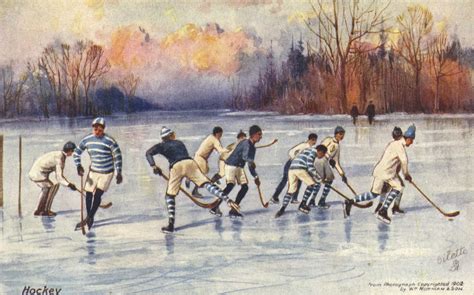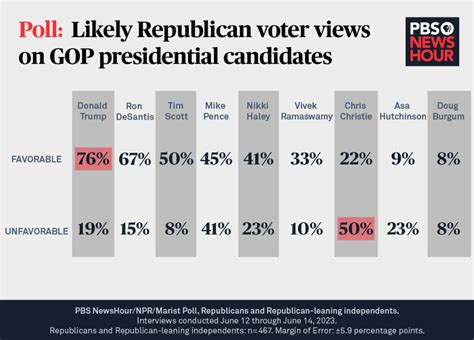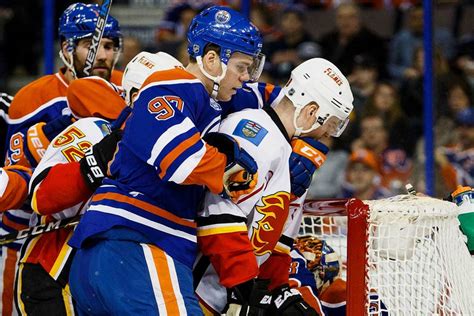Explore the rich history of hockey, from ancient origins to key developments, notable figures, rule evolution, and the transition between ice and field hockey.Hockey, a sport beloved by millions around the globe, boasts a rich and diverse history that traces its roots back to ancient cultures. From rugged fields to glistening ice rinks, the evolution of hockey is a fascinating journey that reflects changes in society and athleticism over the centuries. This article delves into the origins of hockey, exploring how its earliest forms emerged in various cultures and evolved into the competitive games we know today. We will also highlight key developments that shaped ice hockey, the intriguing transition to field hockey, and the notable figures who have significantly impacted the sport’s legacy. Join us as we navigate through the pivotal moments and rule changes that have defined the gameplay of hockey, offering a comprehensive look at its captivating history.
The Origins Of The History Of Hockey In Ancient Cultures
The roots of The History of hockey can be traced back to various ancient cultures, each contributing elements that eventually shaped modern forms of the game. Archaeological findings suggest that variations of hockey-like games were played centuries ago in different parts of the world.
In ancient Egypt, sporting activities resembling hockey were depicted in murals, illustrating the use of curved sticks and a spherical object. Similarly, ancient Greeks and Romans engaged in games that involved hitting a ball with curved wood, demonstrating early forms of stick-and-ball sports.
In Northern Europe, particularly in Ireland and Scotland, games akin to field hockey were played using wooden sticks to strike a ball or a hard object. These early manifestations laid the groundwork for the game, establishing not only the use of a stick but also the competitive nature that defines hockey today.
Indigenous peoples in North America also played a variety of stick games, which were not only recreational but held cultural significance, showcasing the importance of hockey-like sports in social and community life.
As these early cultures interacted and evolved, elements from different regions influenced each other, leading to the diverse adaptations of the game. Over time, the unification of these traditions culminated in what we now recognize as the rich history of hockey, both on ice and on the field.
Key Developments That Shaped Ice Hockey Throughout The Ages
The history of ice hockey is marked by numerous pivotal developments that have transformed it into the thrilling sport we know today. Some of these key milestones are:
- The Formation of Formal Rules: In the mid-19th century, the establishment of structured rules was a significant turning point. The creation of the first formal rule set by the Halifax Hockey Club in 1879 laid the groundwork for modern gameplay.
- Introduction of the Goalie Position: The emergence of the goalie position in the late 1800s revolutionized defensive strategies. This development allowed for more sophisticated gameplay and increased the complexity of team dynamics.
- The Birth of Professional Leagues: The National Hockey Association (NHA) was formed in 1910, followed by the establishment of the National Hockey League (NHL) in 1917. These professional leagues helped popularize the sport, drawing in larger audiences and elevating hockey’s status urban culture.
- Technological Advancements: The introduction of innovations such as fiberglass sticks and composite blades in the late 20th century improved player performance and added finesse to the game.
- Integration of Women’s Hockey: The participation of women in hockey began gaining traction in the late 20th century, culminating in the formation of women’s professional leagues and their inclusion in international competitions, significantly enriching the game’s history.
Each of these developments has played a crucial role in shaping the rich history of ice hockey, contributing to its evolution as a beloved sport across the globe.
The Transition From Ice Hockey To Field Hockey Explained
The transition from ice hockey to field hockey showcases the sport’s adaptability and evolution over time. While both sports share common origins, each has developed its own unique identity, rules, and style of play. Understanding this transition is crucial to appreciating The History of hockey as a whole.
Ice hockey developed in colder climates where frozen water bodies allowed for competitive play on ice surfaces. In contrast, field hockey emerged in regions with warmer climates, utilizing grass fields for gameplay. The fundamental elements, such as stick use and scoring goals, remained consistent, but various factors influenced their development.
One of the key aspects that led to the divergence of these sports was the equipment used. Ice hockey players don protective gear due to the fast-paced and physical nature of the game on ice, while field hockey players wear minimal gear, focusing instead on speed and agility on grass. The playing conditions also affected the gameplay; ice hockey emphasizes quick reflexes and deep skating abilities, whereas field hockey requires stamina, strategic passing, and ball control.
Furthermore, regional popularity played a significant role in the evolution of both forms. Ice hockey gained prominence in countries like Canada and the United States, becoming an integral part of their sporting culture. Meanwhile, field hockey flourished in countries like India, Pakistan, and the Netherlands, developing a different fan base and competitive structure.
This divergence led to distinct rules and standards for both sports, with federations like the International Ice Hockey Federation (IIHF) and the International Hockey Federation (FIH) governing each respectively. As a result, while the core concept of using a stick to maneuver a ball or puck remains, the journey of ice hockey and field hockey reflects a rich and diverse sporting heritage.
The transition from ice hockey to field hockey illustrates how environmental factors, equipment, and regional culture influence The History of sports. Each variant has retained its excitement and continues to captivate audiences worldwide.
Notable Figures And Their Impact On Hockey’s Rich History
The world of hockey, encompassing both ice and field variants, has been significantly shaped by several key individuals whose contributions have left an indelible mark on The History of the sport. Their innovations, leadership, and dedication helped turn hockey into the widely celebrated game it is today.
One of the most prominent figures in ice hockey is Wayne Gretzky, often referred to as The Great One. His remarkable skill set and record-breaking scoring ability, including holding the title for most goals and assists in the NHL, revolutionized how the game is played and appreciated. His playing style and sportsmanship set a benchmark for future generations.
Field hockey has its own icons, such as Dhyan Chand, an Indian player who is renowned for his extraordinary scoring prowess. Dhyan Chand’s influence extended beyond his individual achievements; he helped popularize field hockey internationally during the early 20th century, leading India to three Olympic gold medals.
Another significant figure is James Naismith, the founder of basketball but also an advocate for hockey’s development in North America. His role in promoting sports in schools inspired a generation to appreciate physical education and engagement through various games, including hockey.
The impact of coaches cannot be overlooked. Herb Brooks, famous for leading the U.S. men’s ice hockey team to victory in the 1980 Winter Olympics, not only redefined team strategy but also brought national attention to the sport, emphasizing teamwork and resilience. His legacy continues to inspire players and coaches alike.
The contributions of these notable figures, along with many others, have profoundly influenced the history and culture of hockey. Their legacies persist, reminding us that the game is as much about the people as it is about the puck or the ball.
The Evolution Of Rules And Gameplay In Hockey’s History
The The History of hockey is not just marked by iconic players and memorable matches but also by the continuous evolution of its rules and gameplay. Over the years, the sport has undergone significant transformations to enhance safety, fairness, and enjoyment for players and spectators alike.
In the early days, hockey was played with few standardized rules, leading to varying styles depending on the region and culture. The introduction of formalized rules began in the 19th century, notably with the formation of the first ice hockey league in Canada. The The History of these rules showcases a shift towards more defined gameplay, including the establishment of basic regulations such as the size of the rink and the number of players on each team.
One of the most significant changes occurred in the early 1900s with the introduction of the forward pass in field hockey, which transformed offensive strategies and gameplay dynamics. In ice hockey, the 1911 amendment to allow for goaltender pads marked a pivotal moment, ensuring better protection for players and altering the nature of goalkeeping forever.
As the sport grew, so did the need for consistency across various leagues and competitions. This led to the formation of governing bodies, such as the International Ice Hockey Federation (IIHF) and the Fédération Internationale de Hockey (FIH) for field hockey, which standardized rules and facilitated international competitions.
In recent decades, the evolution of technology has also played a critical role. The implementation of video review systems for penalty calls and goals has added a modern twist to the traditional gameplay. As technology continues to advance, it’s likely that we will see further innovations that change how hockey is played and officiated.
Overall, the evolution of rules and gameplay in hockey’s history reflects the sport’s adaptation to the needs of the players and fans, ensuring that it remains an exciting and dynamic sport for generations to come.
Frequently Asked Questions
What is the origin of hockey?
The origins of hockey date back to ancient civilizations, with evidence of similar stick-and-ball games played in Egypt, Greece, and indigenous cultures in North America.
How did ice hockey evolve in Canada?
Ice hockey evolved in Canada in the late 19th century, influenced by older games like field hockey and lacrosse, leading to the formation of rules and the establishment of the first organized teams.
What significant events shaped the development of field hockey?
Field hockey developed in the early 19th century in England, with significant events including the establishment of the Hockey Association in 1886 and the inclusion of women’s hockey in the Olympics in 1980.
What are the key differences between ice hockey and field hockey?
Key differences include the playing surface (ice for ice hockey and grass or synthetic turf for field hockey), the number of players on the field, equipment used, and the style of play.
How are the rules of ice hockey and field hockey different?
The rules differ significantly; for example, ice hockey allows body checking while field hockey prohibits physical contact, focusing instead on skillful maneuvering and teamwork.
What impact did international competitions have on hockey’s popularity?
International competitions, such as the Olympics and World Championships, have significantly boosted hockey’s popularity, promoting global interest and participation across various demographics.
How has technology influenced the game of hockey?
Technology has influenced hockey through improved equipment design, video review for officiating, and analytics for player performance, enhancing both the gameplay experience and fan engagement.








